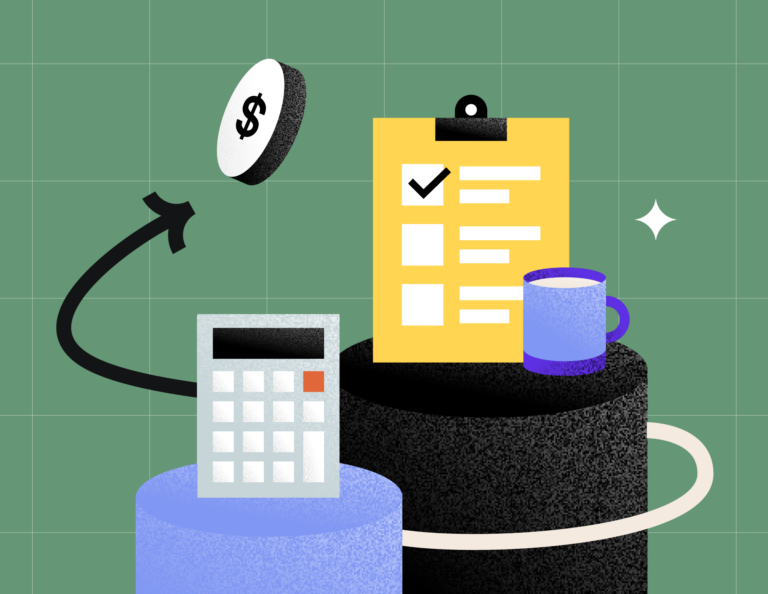
Do you remember your early days as a business owner when you counted every penny? You kept all your receipts, you documented every activity with a client management software for small businesses, you developed a business plan and were ready to rock! When independent business owners have been in business for a while, it’s not uncommon for bad financial habits to creep in. You might begin overspending, paying bills late (while accruing late charges) or using your business to fund luxury before ensuring your stability.
What if instead, you could donate more, invest more and be able to afford great healthcare for your family and perhaps your employees? It starts with cash management discipline, communication and other strategic planning and tools. Let’s take a deeper look and define the areas in your business in which you can improve your cash flow management as a seasonal business owner:
What is Cash Flow?
Cash flow is the movement of money within an organization. There is either cash inflow or cash outflow. A cash inflow is the increase of payments to your bank and the increase of sales to your business whether through payments not to include accounts receivables (these are not cash inflows yet).
You always want your cash inflows to be more than your cash outflows. Positive inflows indicate a positive business position. On the other hand, a negative cash flow means the business is not thriving and spending beyond its means. For seasonal business owners, this is a blind spot that jeopardizes their business sustainability. Seasonal businesses are those that earn most of their annual revenue in a short period rather than consistently throughout the year. Event-based businesses, like wedding photographers or planners, often fall into this category. Does that sound like you? If so, ask yourself these following questions to analyze your cash flow management:
Work With a Pro to Manage Your Cash Flow Year-Round
Work with HoneyBook Pro, Tabitha Hollimon, to learn how to manage your cash flow and keep your finances organized.
Learn MoreWhy is Your Cash Flow Management the Key to Your Business Success?
“Cash is king” in business. Cash management will show investors and lenders whether your spending habits are frivolous or well planned. Here are a few things that can impact your cash flow management:
- You’re a sole proprietor and managing your cash flow on your own (on top of everything else you have to do).
- You’re not having regular discussions about budgeting or planning for the future.
- You’re running your business as a partnership without proper cash and debt management agreement in place (which should include a clause for the number of distributions to each partner).
Pro Tip: No one partner should be able to take money out of the business without the notice of the other partner(s).
Are You Operating On Promise-To-Pay?
It’s important to understand that a business will not survive or succeed on the backing of promises. Promises without payment are a dead end for an independent business, especially a seasonal business. Business owners have to be willing to collect fees upfront and send online invoices for any additional services or materials.
Is Your Inventory Devouring Your Cash Flow?
Inventory can tie up cash and force your company to sell products at major discounts which in turn can hurt the business cash flow. Have a budget and a plan for how to move inventory through the sales cycle process without reliable discounting and always utilize your learnings from prior years.
Is Payroll Creating a Drain on Your Cash Flow?
Hiring part-time or full-time help can often be an asset to your business, but it can also become a cash flow burden. Remember these tips to make sure payroll isn’t becoming a drain on your cash flow:
- Pay attention to hour tracking and work output to avoid foul play or abuse of business policy.
- Watch for bad customer service, low morale and productivity, all of which can affect the bottom line.
- Payroll taxes are another area of payroll that impacts cash flow…
- Employee turnover can hurt not only your business workflow, by creating a gap in the services you can provide (and thus the revenue you can generate), but also your cash flow by creating an increase in unemployment insurance.
Pro Tip: Plan trips with your future cash flow in mind. Unnecessary travel and meals can add up and become an area of your operating costs that can negatively impact your cash flow.
Are You in Black or Red?
A seasonal business should be intentional about the timing of preparing for the slow seasons and expanding during peak season.
A budget is a vital lifeline of a business. The metric used to determine if a business is successfully demonstrating cash worthiness is called being in the black. In the black denotes a strong possibility that the business can pay their bills and create a form of wealth for the business owners.
When a business is in the opposite of the black, it is in the red. If your numbers are in the red, your cash management is off track and needs a better strategy. You need to consider overhauling wasteful spending, selling undesirable products and/or removing services and monitoring costs like payroll, advertising and marketing, meals, travel, etc.
Stay in Control Of Your Cash Inflow and Outflow
According to thebalancesmb.com, the formula to secure Free Cash Flow is as follows:
Free Cash Flow = Operating Cash Flow – Working Capital – Capital Expenditures – Dividends
In other words, your cash flow is the cash you have on hand after you have paid all your bills, payroll, payout distributions, fixed asset purchases, etc. To maintain a grasp on your cash:
- Know the business cycle for your business and understand when seasonality occurs.
- Learn how to identify out-of-control debt and inventory.
- Pay attention to your outstanding bills and don’t get behind on payments.
- Become familiar with forecasting your future sales and variable cost.
Review your business for these key indicators to get a better understanding of your cash flow and where you have the opportunity to make improvements.
Cash Flow Check List
Check out this list for tips on how to stay in control of your cash inflow and outflow: :
- Stagger your bill payments to have cash on hand throughout the month
- Do not pay all your bills at the same time of the month.
- Prioritize the bills you pay (rent, payroll, utilities, etc).
- Pay all bills on time to avoid late charges and request early-pay discounts.
- Think critically when buying new equipment and inventory. Ask yourself, do you need this right now or can you wait for a time that is better for your business financially?
- Choose a payroll cycle that you can reasonably sustain.
- Collect your receivables quickly.
- Avoid having a high balance of uncollectible revenue (unpaid invoices.)
- Online payment software will increase the rate at which you receive your payments.
- Consider using a business line of credit.
- The line of credit will free up your cash on hand.
- Building a business savings account will help in times of low cash inflow.
- Know when to pay distributions, dividends and bonuses and when to reinvest back into the company.
I hope this article has helped you better understand cash flow so that you can ensure your business stays in the black and is built for the long term.
Ready to use Financially Plan? Get our Financial Planning for Independent Business Owners Ultimate Guide.



